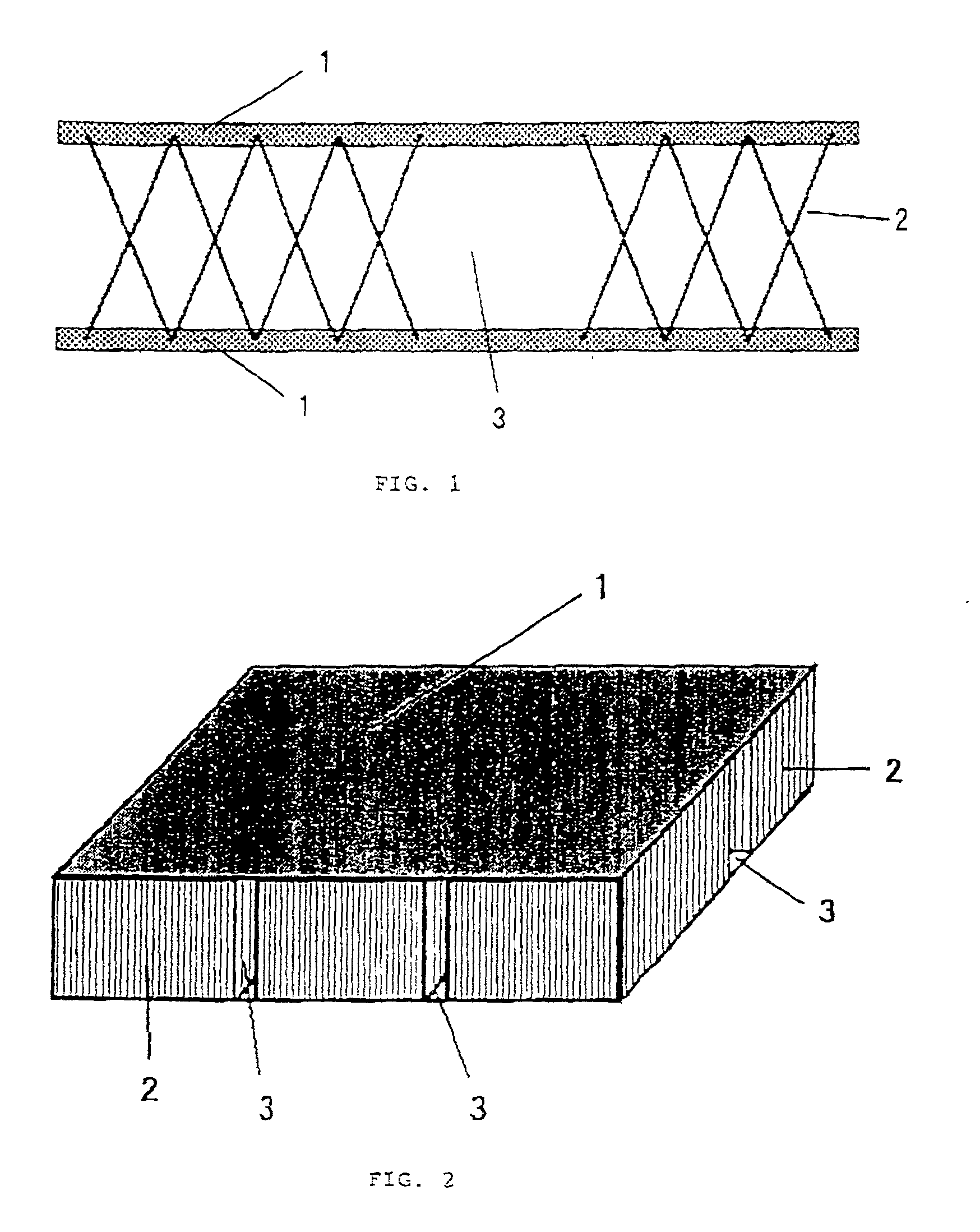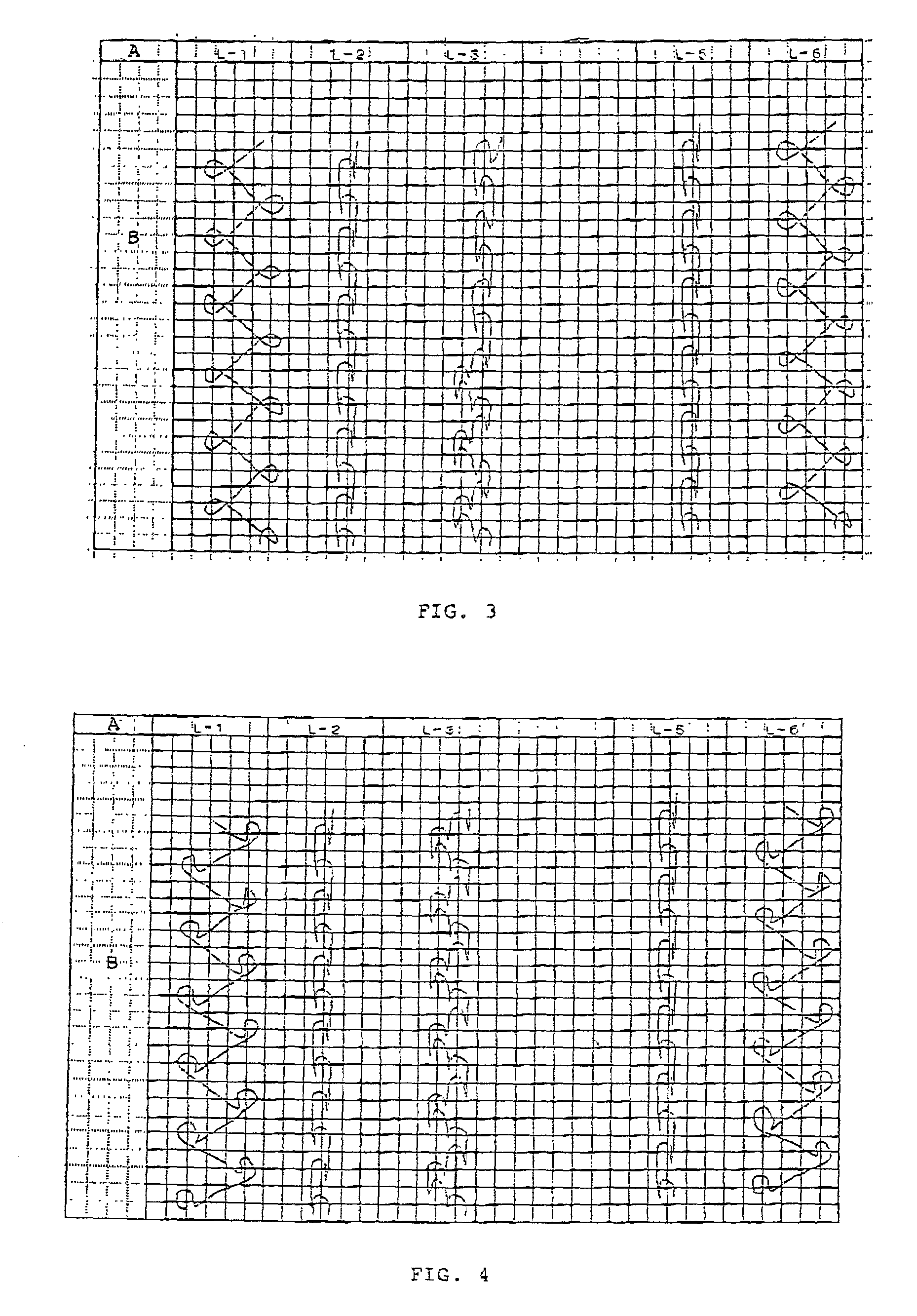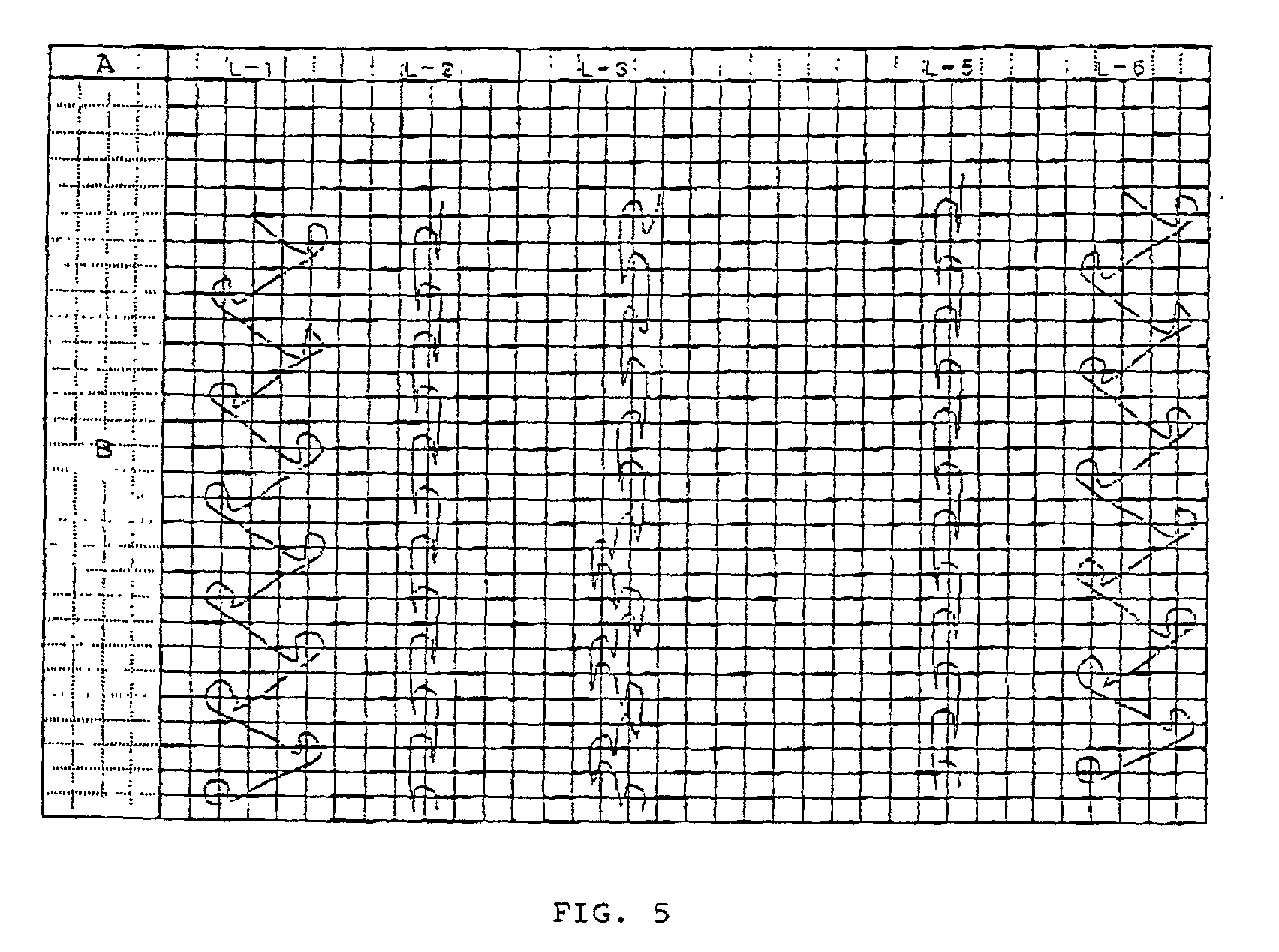Electromagnetic wave shielding material
a shielding material and electromagnetic technology, applied in the field of electromagnetic shielding materials, can solve the problems of difficult cutting, poor thickness direction accuracy, difficult to obtain thin slices, etc., and achieve the effect of eliminating complicated processing steps and allowing more degree of freedom in design
- Summary
- Abstract
- Description
- Claims
- Application Information
AI Technical Summary
Benefits of technology
Problems solved by technology
Method used
Image
Examples
example 1
[0065] A double raschel three dimensionally knitted structure was produced by using the structure pattern as shown in FIG. 4 and a double raschel knitting device having 22 gauge. Polyester fiber of 33 dtex / 12 f was used as the ground structure. Monofilament made of polyester fiber of 22 dtex was used as the connection thread. A blank product of 24 course / inch and 22 well / inch was obtained. Next, the obtained blank product was scoured and dried, whereby excess oil contents and impurities were removed. Thereafter, the blank product was immersed, for two minutes, in an aqueous solution at the temperature of 40.degree. C. which contained 0.3 g / L of palladium chloride, 30 g / L of tin (I) chloride, and 300 ml / L of 36% hydrochloric acid. The blank product was then washed with water. Thereafter, the blank product was immersed, for five minutes, in borofluoric acid whose acid concentration was 0.1 N at the temperature of 30.degree. C. The blank product was then washed with water. Next, the bl...
example 2
[0066] A double raschel three dimensionally knitted structure was produced by using the same structure pattern as example 1 and a double raschel knitting device having 22 gauge. Polyester fiber of 33 dtex / 12 f was used at L1 and L6 of the ground structure. Polyester-based heat-fusing composite thread of 33 dtex / 12 f (the ratio of the core thereof made of regular polyester with respect to the sheath thereof made of low-melting point polyester being 1:1) was used at L2 and L5 of the ground structure. Monofilament made of polyester fiber of 22 dtex was used as the connection thread. A blank product of 24 course / inch and 22 well / inch was thus obtained. The weight percentage of the heat-fusing thread used in the product was 65.4%.
[0067] Next, the obtained blank product was scoured and dried, whereby excess oil contents and impurities were removed. Thereafter, the blank product was immersed, for two minutes, in an aqueous solution at the temperature of 40.degree. C. which contained 0.3 g / ...
example 3
[0068] A double raschel three dimensionally knitted structure was produced by using the pattern structure as shown in FIG. 5 and a double raschel knitting device having 22 gauge. Polyester fiber of 33 dtex / 12 f was used at L1 and L6 of the ground structure. Polyester-based heat-fusing composite thread of 33 dtex / 12 f (the ratio of the core thereof made of regular polyester with respect to the sheath thereof made of low-melting point polyester being 1:1) was used at L2 and L5 of the ground structure. Monofilament made of polyester fiber of 22 dtex was used as the connection thread. A blank product of 24 course / inch and 22 well / inch was thus obtained. The percentage of the heat-fusing thread used in the product was 65.4%.
[0069] Next, the product was processed in a manner similar to that of example 2, whereby an electromagnetic wave shielding material was obtained. Cutting of the electromagnetic wave shielding material was carried out at the portion not having the connection thread. Th...
PUM
| Property | Measurement | Unit |
|---|---|---|
| thickness | aaaaa | aaaaa |
| thickness | aaaaa | aaaaa |
| thickness | aaaaa | aaaaa |
Abstract
Description
Claims
Application Information
 Login to View More
Login to View More - R&D
- Intellectual Property
- Life Sciences
- Materials
- Tech Scout
- Unparalleled Data Quality
- Higher Quality Content
- 60% Fewer Hallucinations
Browse by: Latest US Patents, China's latest patents, Technical Efficacy Thesaurus, Application Domain, Technology Topic, Popular Technical Reports.
© 2025 PatSnap. All rights reserved.Legal|Privacy policy|Modern Slavery Act Transparency Statement|Sitemap|About US| Contact US: help@patsnap.com



